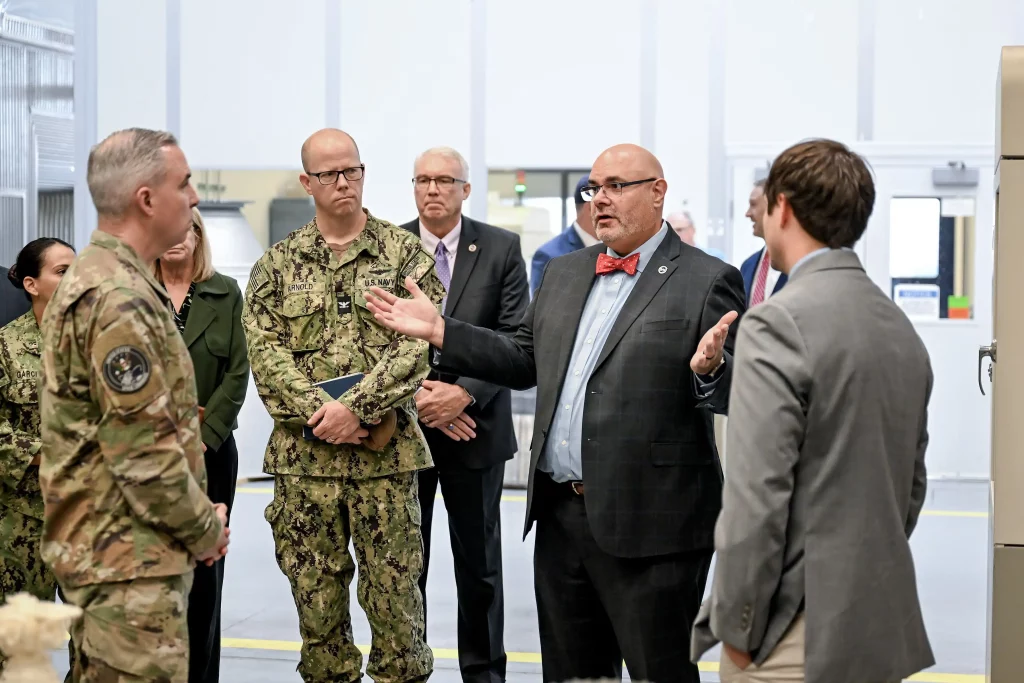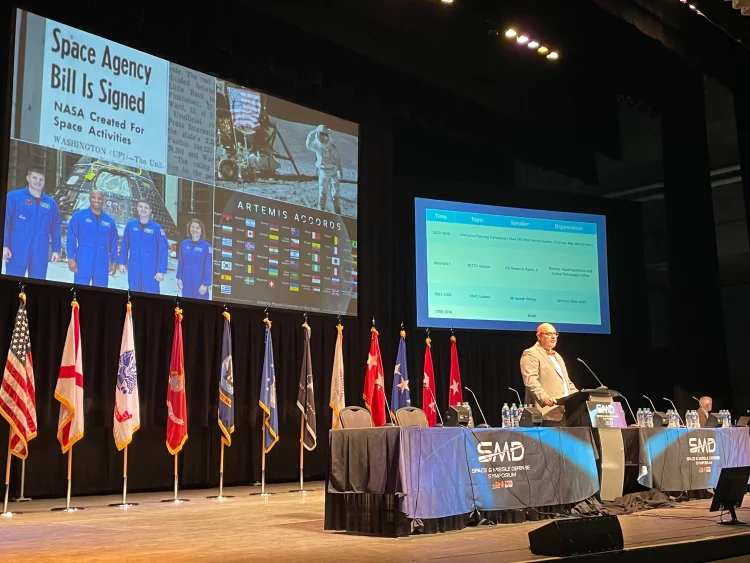Introduction
The Marshall Space Flight Center (MSFC), a pivotal hub for NASA’s space exploration and research, continually showcases groundbreaking achievements and innovative projects that push the boundaries of space exploration. The August 14, 2024, edition of “The Marshall Star” highlights several significant developments at MSFC. This comprehensive article delves into these updates, exploring their implications for space exploration, technology advancements, and scientific research.
1. Key Achievements and Projects
Advanced Space Launch System (SLS) Developments
A. Overview of SLS
The Space Launch System (SLS) is NASA’s heavy-lift rocket designed to propel astronauts and cargo beyond low Earth orbit (LEO) and support missions to the Moon, Mars, and beyond. As a cornerstone of NASA’s Artemis program, the SLS plays a critical role in returning humans to the Moon and establishing a sustainable lunar presence.
B. Recent Milestones
- Successful Test Flights: Recent test flights of the SLS have demonstrated the rocket’s capabilities and reliability. These tests are crucial for validating the rocket’s performance and ensuring it meets the rigorous standards required for deep space missions.
- Integration and Assembly: MSFC has made significant progress in integrating and assembling the SLS components. The center’s advanced facilities and expertise have been instrumental in bringing the rocket’s various elements together for final preparations.
C. Future Objectives
- Artemis Missions: The upcoming Artemis missions will rely on the SLS to launch the Orion spacecraft and other payloads necessary for lunar exploration. MSFC’s continued work on the SLS will be critical for the success of these missions.
- Mars Exploration: Beyond the Moon, the SLS will be used for missions to Mars and other destinations in the solar system. The ongoing development and optimization of the rocket are essential for achieving these ambitious goals.
Innovative Propulsion Systems
A. Development of New Technologies
MSFC is at the forefront of developing advanced propulsion systems that will enhance the efficiency and capabilities of space missions. These technologies include next-generation rocket engines, in-space propulsion methods, and reusable systems.
B. Recent Achievements
- Engine Testing: Recent testing of new rocket engines has demonstrated significant improvements in performance and efficiency. These engines are designed to support a variety of missions, including deep space exploration and crewed missions to distant planets.
- In-Space Propulsion: The development of in-space propulsion systems, such as electric propulsion and chemical propulsion, has advanced significantly. These systems will enable more efficient travel within the solar system and support long-duration missions.
C. Future Prospects
- Deep Space Missions: The new propulsion technologies being developed at MSFC will play a crucial role in future deep space missions, including crewed missions to Mars and beyond.
- Commercial Spaceflight: Innovations in propulsion systems also have the potential to support commercial spaceflight initiatives, providing more opportunities for private sector participation in space exploration.
Space Robotics and Automation
A. Overview of Space Robotics
Space robotics play a critical role in exploring and operating in space environments. From robotic arms on spacecraft to autonomous rovers on other planets, these systems enable a wide range of scientific and operational tasks.
B. Recent Developments
- Robotic Arm Innovations: MSFC has made significant advancements in robotic arm technology, enhancing their precision, versatility, and functionality. These innovations are crucial for operating spacecraft and conducting scientific experiments in space.
- Autonomous Systems: The development of autonomous robotic systems has improved the ability to perform complex tasks without direct human intervention. These systems are essential for operating spacecraft and conducting research in remote locations.
C. Future Applications
- Lunar Exploration: Robotics will play a key role in the Artemis missions and future lunar exploration efforts. Robotic systems will be used to explore the lunar surface, conduct scientific research, and assist in habitat construction.
- Mars Exploration: Advanced robotics will also be critical for exploring Mars and other planets. These systems will support scientific research, sample collection, and habitat construction on distant worlds.
2. Research and Innovation
Human Spaceflight Research
A. Advancements in Space Medicine
Understanding the effects of long-duration spaceflight on the human body is essential for preparing for future deep space missions. MSFC’s research in space medicine focuses on studying these effects and developing countermeasures to ensure astronaut health and performance.
B. Recent Studies
- Bone Density Research: Recent studies have investigated the impact of microgravity on bone density and strategies to mitigate bone loss during long-duration missions. This research is crucial for ensuring astronauts’ health during extended stays in space.
- Psychological Well-being: Research into the psychological effects of space travel has explored strategies to support astronauts’ mental health and well-being. This includes developing support systems and coping strategies for the isolation and stress of space missions.
C. Future Research Directions
- Extended Missions: As plans for extended missions to Mars and beyond progress, research into space medicine and human performance will become increasingly important for ensuring astronaut health and mission success.
- Space Habitats: Ongoing research will also focus on developing and testing space habitats that can support long-duration missions, including systems for life support, radiation protection, and crew comfort.
Astrobiology and Planetary Science
A. Exploration of Extraterrestrial Life
Astrobiology is the study of the origin, evolution, and distribution of life in the universe. MSFC’s research in this field aims to understand the potential for life beyond Earth and investigate the conditions necessary for life to exist.
B. Recent Discoveries
- Mars Sample Return: The Mars Sample Return mission, which involves collecting samples from the Martian surface and returning them to Earth, has made significant progress. MSFC’s research contributes to analyzing these samples and understanding the potential for past life on Mars.
- Exoplanet Studies: Research into exoplanets (planets outside our solar system) has identified potential candidates for habitability. MSFC’s work in this area includes studying the atmospheres and compositions of these planets to assess their potential for supporting life.
C. Future Exploration
- Lunar and Mars Missions: Future missions to the Moon and Mars will continue to investigate the potential for life and habitability. MSFC’s research will support these missions by providing insights into the environmental conditions and potential for life on other planets.
- Deep Space Exploration: Ongoing research will also focus on exploring other regions of the solar system and beyond, searching for signs of life and understanding the conditions that support habitability.
3. Education and Outreach
A. Engaging the Public
NASA’s Marshall Space Flight Center is committed to engaging the public and inspiring the next generation of scientists, engineers, and explorers. Through various educational and outreach programs, MSFC aims to share the excitement of space exploration and foster interest in STEM (science, technology, engineering, and mathematics) fields.
B. Recent Initiatives
- STEM Education Programs: MSFC has launched several STEM education programs targeting students of all ages. These programs include interactive workshops, educational materials, and opportunities to engage with NASA scientists and engineers.
- Public Events and Exhibits: The center regularly hosts public events, exhibits, and lectures to showcase its work and engage with the community. These events provide insights into NASA’s missions and inspire attendees to pursue careers in space science and engineering.
C. Future Outreach Efforts
- Virtual Experiences: As technology advances, MSFC is exploring new ways to engage the public through virtual experiences, including online tours, interactive simulations, and live-streamed events.
- Collaborations with Schools: The center is expanding its collaborations with schools and educational institutions to provide hands-on learning experiences and real-world applications of STEM concepts.

4. Challenges and Opportunities
A. Addressing Technical Challenges
The pursuit of ambitious space exploration goals presents numerous technical challenges, including developing new technologies, ensuring mission safety, and managing complex systems. MSFC’s work involves addressing these challenges through innovative solutions and continuous improvement.
B. Seizing Opportunities for Collaboration
Collaboration with industry partners, international space agencies, and research institutions provides opportunities to leverage expertise, resources, and technologies. MSFC’s partnerships play a crucial role in advancing space exploration and achieving mission objectives.
C. Preparing for Future Missions
Preparing for future space missions requires careful planning, testing, and development. MSFC’s efforts focus on ensuring that new technologies, systems, and procedures are ready to support the next generation of space exploration.
Conclusion
The August 14, 2024, edition of “The Marshall Star” highlights the impressive achievements and ongoing efforts at NASA’s Marshall Space Flight Center. From advancements in rocket technology and propulsion systems to groundbreaking research in space medicine and astrobiology, MSFC continues to drive innovation and progress in space exploration.
The center’s commitment to education and public engagement underscores its dedication to inspiring the next generation of scientists and engineers. As MSFC tackles technical challenges and seizes opportunities for collaboration, it remains at the forefront of advancing human spaceflight and exploring the universe.
Through its contributions to NASA’s missions and the broader space community, MSFC plays a vital role in shaping the future of space exploration and expanding our understanding of the cosmos. The achievements and updates highlighted in this edition of “The Marshall Star” reflect the center’s ongoing commitment to excellence and its pivotal role in advancing humanity’s journey into space.


















































Discussion about this post